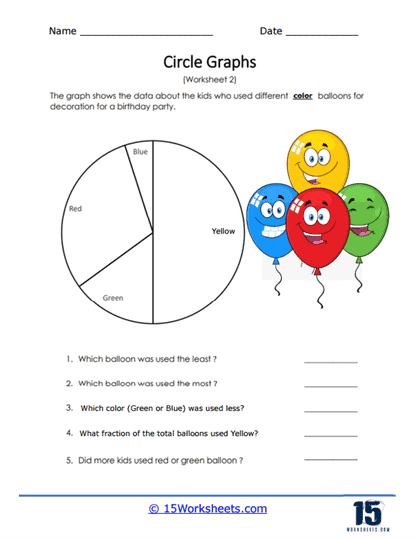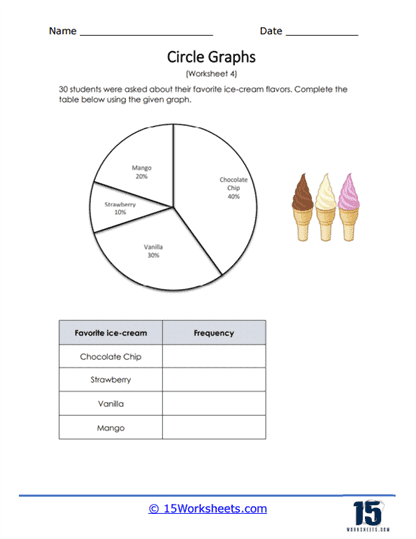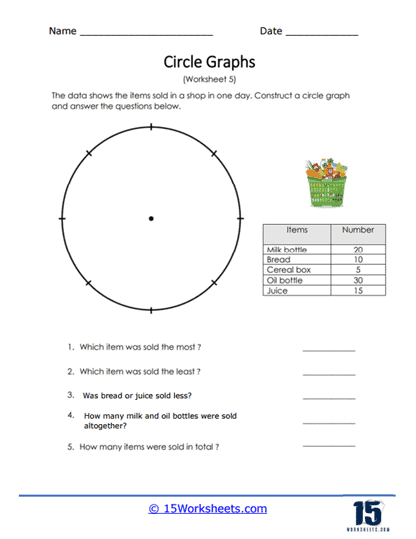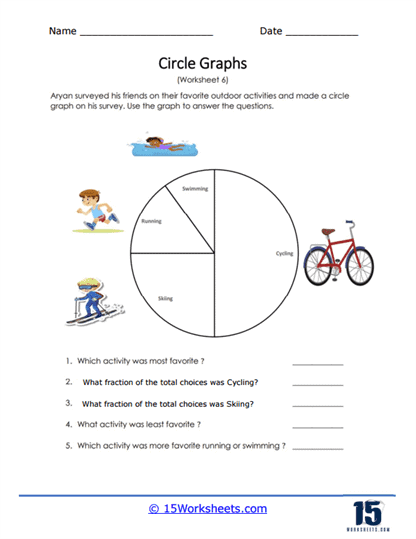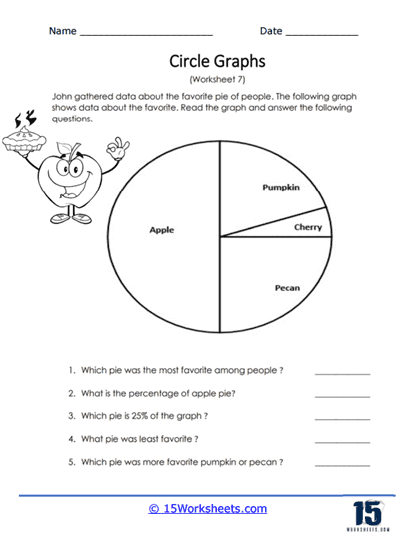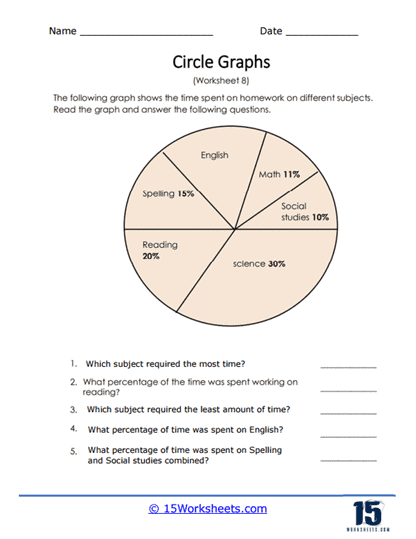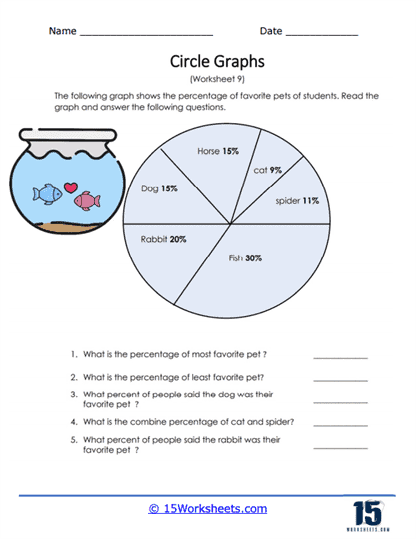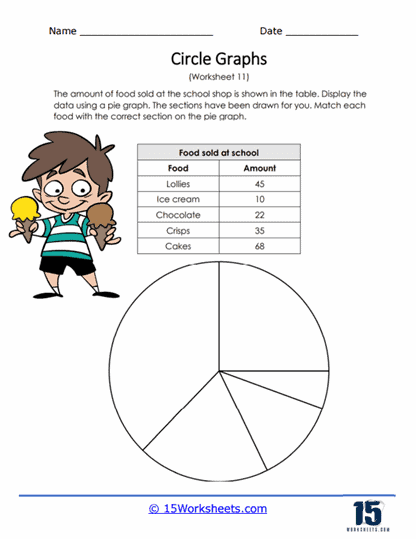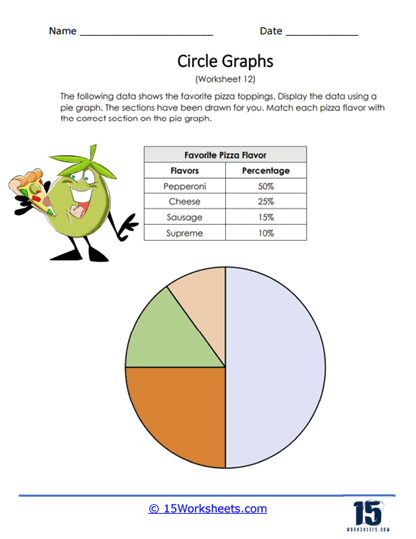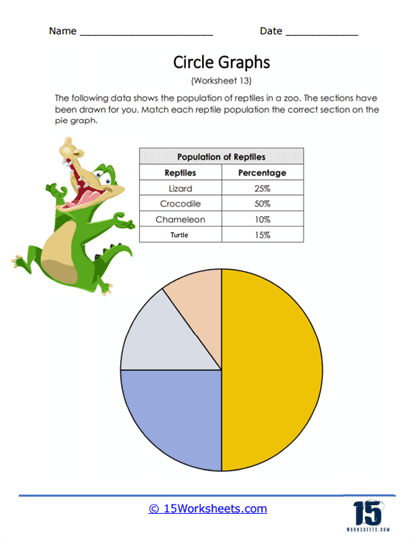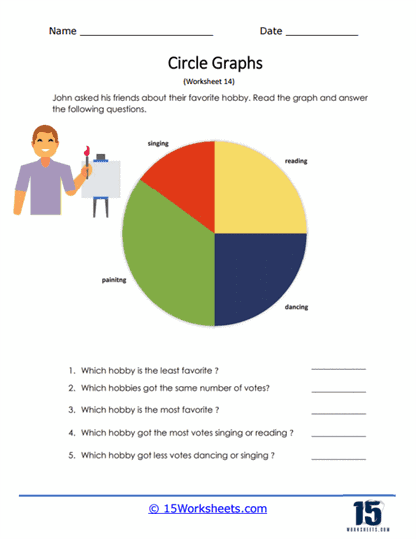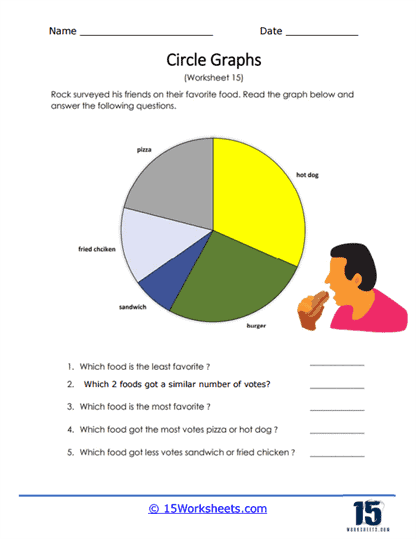Circle Graphs Worksheets
What Are Circle Graphs?
Circle graphs, also known as pie charts, are a type of graphical representation used to display data in the form of a circle divided into sectors, or “slices.” Each sector corresponds to a specific category or proportion of the total dataset. The size of each sector (or angle of the arc) is proportional to the percentage or value it represents in the overall data.
Circle graphs are useful for visualizing the distribution or composition of a dataset when comparing the relative sizes of different categories. They work best with a limited number of categories and are often used to represent percentages, proportions, or shares of a whole.
For example, if you want to display the distribution of different types of transportation used by a group of people, you can create a circle graph with sectors representing the percentages of people using cars, bicycles, public transportation, and walking. This allows the viewer to quickly and easily compare the popularity of each transportation mode.
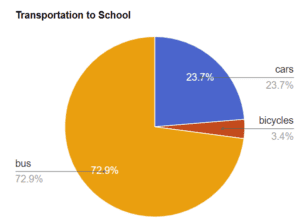
Example: The above circle graph describes the different forms of transportation that students use to get to school.
From this graph we can quickly understand that the mass majority of students get to school using a bus (72.9%). The fewest number of students ride bicycles to school.
How Do You Read Circle Graphs?
Imagine we have a circle graph that shows the favorite ice cream flavors at your school. The circle, or the whole pie, represents all the ice cream flavors that people chose. It could be vanilla, chocolate, strawberry, and so on. Now, the circle is divided into different sections or ‘slices’ just like a pie, and each slice represents a different flavor.
The size of each slice is super important. It shows us how popular each flavor is. A big slice means that flavor is really popular – lots of people picked it as their favorite. A small slice means fewer people picked that flavor. The size of the slice is a clue to how many people like that flavor.
Let’s say, for example, half the circle – that’s the same as one big 50% slice – represents vanilla. That means half of all the people who answered the survey picked vanilla as their favorite flavor. A smaller slice might represent strawberry. Maybe it’s only a quarter of the circle or 25%. That means one in every four people chose strawberry.
Sometimes, these pie charts also have percentages or numbers next to each slice. If it says 50% or “50” next to the vanilla slice, that confirms half the people picked vanilla.
By looking at the whole pie and comparing the slices, you can tell which flavors are the most popular and which are the least popular. And that’s really helpful because it lets you see the big picture quickly and easily. For example, you can see that vanilla is twice as popular as strawberry because the vanilla slice is twice as big.
So, just remember, each slice of the pie chart represents a piece of the total – like one flavor of ice cream out of all the ones that were chosen. The bigger the slice, the more people chose that option. And the smaller the slice, the fewer people chose that option.
Real World Applications
Business and Finance – Pie charts are often used to display financial data, such as a company’s revenue breakdown by product line, the distribution of expenses across different categories, or the composition of an investment portfolio.
Marketing – Marketing professionals may use pie charts to show the market share of different brands or products, the demographic distribution of their target audience, or the sources of website traffic.
Education – Teachers can use circle graphs to help students visualize and understand data. For example, they might use a pie chart to show the composition of a class based on students’ interests, academic performance, or other attributes.
Healthcare – Circle graphs can be used to display data related to healthcare, such as the distribution of disease cases by age group, the prevalence of different conditions, or the allocation of healthcare resources.
Politics and Government – Pie charts are often used to illustrate the distribution of votes in an election, the allocation of government spending, or the demographics of a population.
Social Sciences – Researchers may use circle graphs to represent the distribution of data in various social categories, such as income levels, ethnic backgrounds, or gender.
Media – News outlets often use pie charts to communicate information about topics like public opinion, survey results, or the breakdown of data related to current events.
It’s important to note that while circle graphs can be an effective way to represent certain types of data, they may not be appropriate for all situations. They are best suited for displaying a limited number of categories and may not be as effective when used for large datasets or data that requires precise comparisons. In such cases, other graphical representations like bar graphs or line graphs might be more appropriate.


